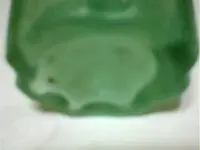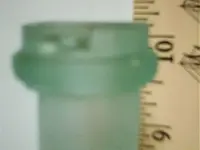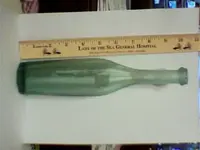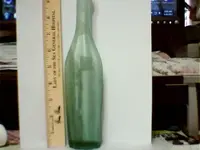If the seams on the side disappear somewhere around the base of the neck, then it is a pre 1922 bottle. If the seams go all the way to the top, then it is newer. Whether the seams are faint or not means nothing when it comes to its age. The fact that the bottle shows major flaws probably means it is an older bottle. Its color also shows a problem manufacturers had with their glass bottles and jars well into the early 1900's, metal impurities in the glass, which over time turned the glass from clear to another colored tint, the color of the tint depending on the impurity. The indented bottom was called a "hicup" bottom. I've seen indented bottoms that pushed up any where from an inch, to more than four inches. Before weights and measures laws this was a great way of getting better profits by having a bottle that appeared to hold more content than it actually did. This form of deception was commonly used on more expensive beverages such as wines and brandies, which is probably what your bottle's contents was. And that leads to the nearly invisible seams. Many or the more expensive liquors, used bottles that were spun before being removed from the mold in an attempt to erase the seams. Or, in your case, it just may have been erosion from the sea. Anyway, hope that helps.








